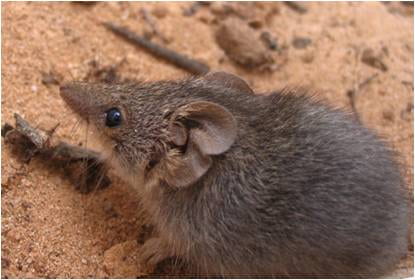
How does pyrodiversity influence small mammal abundance and genetic diversity?
How does pyrodiversity shape small mammal populations?
In a new study in Journal of Applied Ecology, Julianna Santos, Holly Sitters and Luke Kelly explore how fire mosaics influence both the abundance and genetic diversity of small mammals in semi-arid Australia.
Using field surveys and genome-wide SNPs for mallee ningaui and Bolam’s mouse, Julianna and team found species-specific responses to fire patterns. Mallee ningaui abundance peaked decades after fire, while Bolam’s mouse preferred more recently burned areas. Genetic diversity of ningauis declined with time since fire, hinting at fire’s role in shaping movement and gene flow.
This work highlights the value of maintaining a mix of fire-age classes to support small mammal conservation in semi-arid Australia by supplying suitable habitats that sustain a high abundance of individuals while promoting gene flow through the landscape.

Categories
- Uncategorised